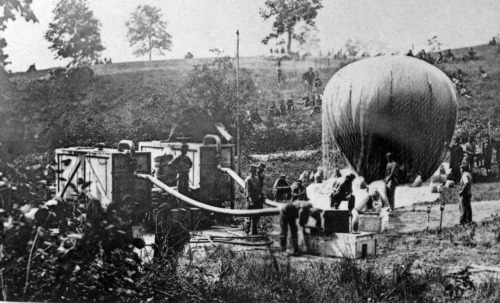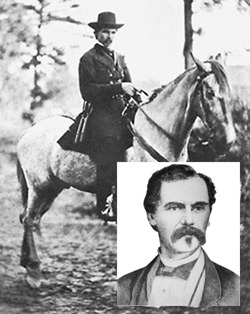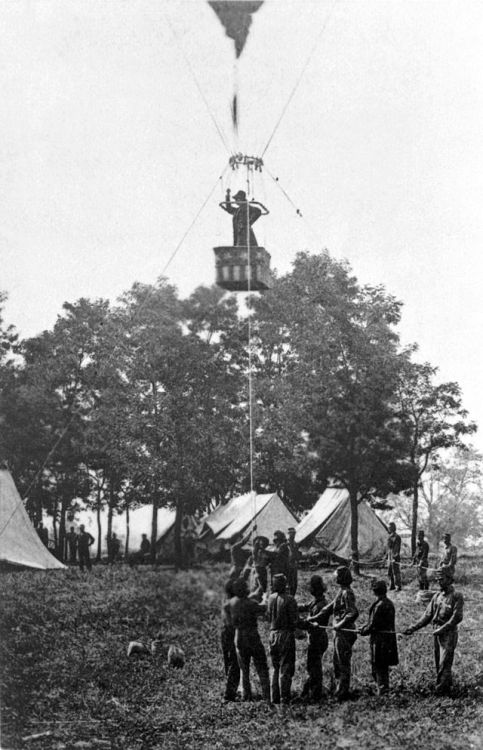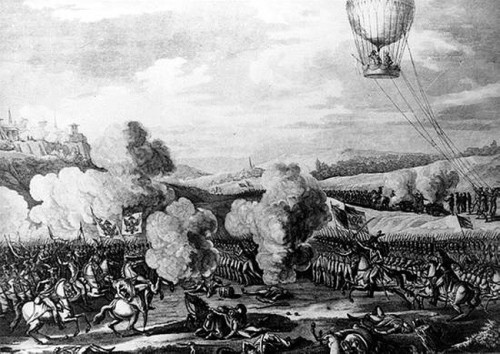peashooter85:The Civil War Air Force — The Union Army Balloon CorpsAt the outset of the American Civ
peashooter85:The Civil War Air Force — The Union Army Balloon CorpsAt the outset of the American Civil War US President Abraham Lincoln had the brilliant idea of developing some kind of aerial weapon to use against the Confederacy. For the past century, brave aeronauts had been flying lighter than air balloons and accomplishing many amazing feats. Lincoln believed that surely there was some way to use such technology for warfare. On June 11th, 1861 the aeronaut and scientist Prof. Thaddeus C. Lowe proposed his idea for using balloons for aerial reconnaissance. Imagine, in the mid 19th century, being able to see your enemy’s position and movements, what a powerful tool to have in a military arsenal. Prof. Lowe demonstrated proof of his concept by flying one of his own balloons 500 feet above the White House, and using a telegraph line to instantly communicate all that he saw. Lincoln was impressed, and immediately appointed Lowe as chief aeronaut of the newly formed Union Army Balloon Corps.Prof. Lowe recruited 8 other aeronauts, as well as several engineers, chemists, topographers, and workers into the Corps. At its height, the Balloon Corps consisted of 7 balloons; the Eagle, Constitution, Washington, Intrepid, Excelsior, and United States. The Balloons Corps operated in several important battles, including Bull Run, Yorktown, the Peninsular Campaign, Antietam, and Fredericksburg. The aeronauts and crew of the Corps used several methods of communication, including telegraph lines (when used in tethered flight) hand signals, mirror signals, flames, and flag signals. While the aeronauts of the Corps often provided vital information on Confederate troop movements, they also morphed the balloon into a deadly weapon. Using flag signals, aeronauts were able to direct blind artillery strikes on enemy positions, using certain signals to communicate if the shots were short or far. The use of aircraft to direct artillery fire in combat would become a staple of combat even up to this day. The most incredible operation of the Balloon Corps was a naval based balloon named Washington, which operated off of a flat top barge called the Washington Park Custis off the Atlantic coast, flying inland to spy on Confederate coastal fortifications. It is quite possibly history’s first use of the aircraft carrier.Sadly, despite all that they had accomplished, most Union commanders were unimpressed, or even outright despised the Balloon Corps. It was newfangled technology that few understood, and many saw the Balloon Corps as a band of carnival entertainers who were bilking the Union Army. In 1863 the Union Army decided to cut the funding to the Balloon Corps and cut the pay of its men. As a result Prof. Thaddeus C. Lowe resigned in frustration. Without the leadership of Lowe and without proper funding the Balloon Corps quickly fell apart and was disbanded. It’s such a shame that Union commanders were so short sighted, as the use of observation balloons would become a staple of later conflicts especially World War I, and the use of aerial reconnaissance is still commonly practiced today. While the Union Army had little interest in the Balloon Corps, the Confederates were certainly amazed by the idea. During the Civil War they tried to create their own corps, however the unindustrialized south lacked the resources, technology, and technical knowhow to operate such an organization. and the Confederate Balloon Corps never came close to matching its Union counterpart. -- source link



